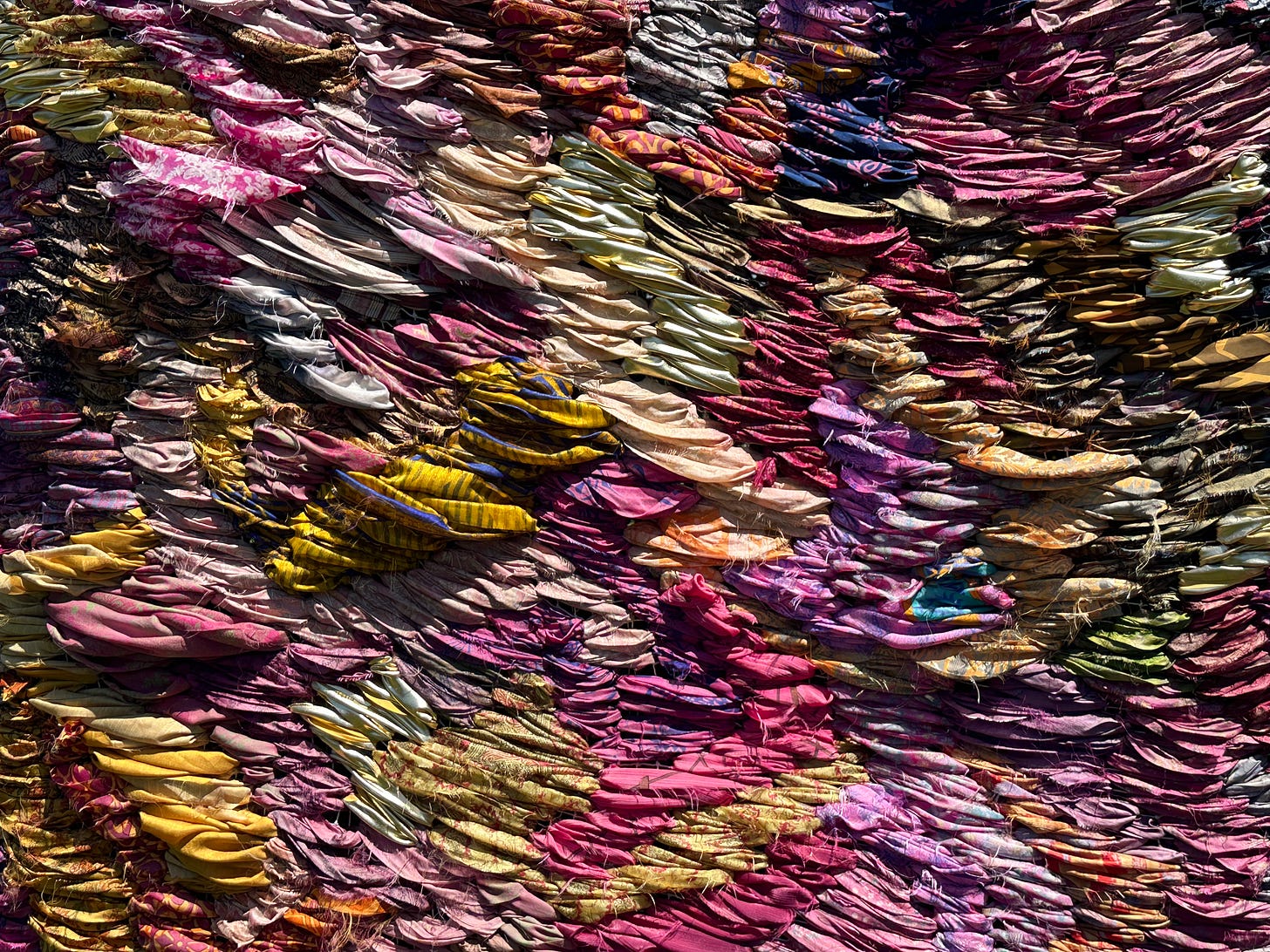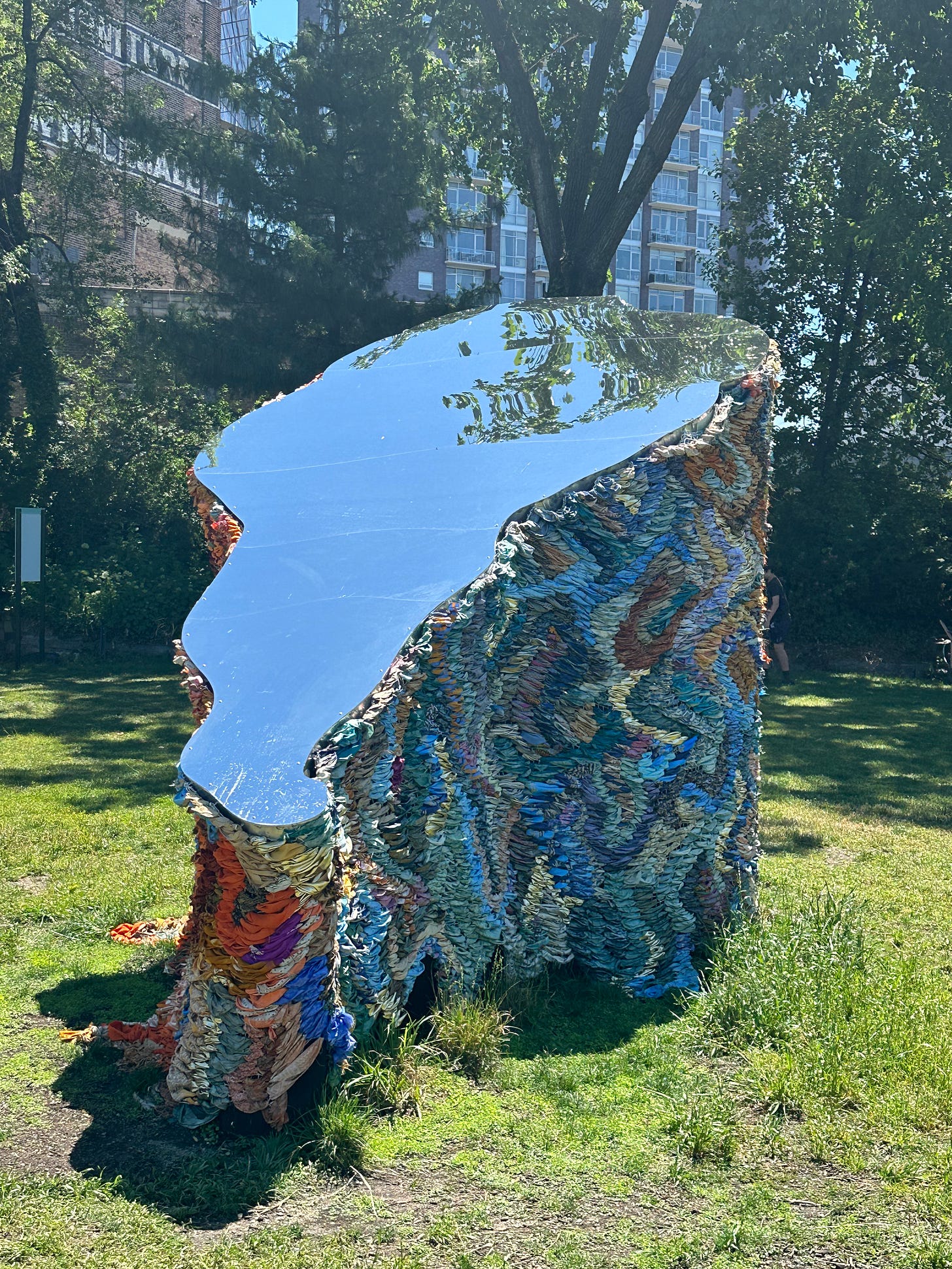Material #29: Connective fabric
Through-threads between Edwidge Danticat’s “Bound Together” and Suchitra Mattai's "We are nomads, we are dreamers"

Angled towers shaped like land masses rise up out of the ground across Socrates Sculpture Park. The tops are mirrors, reflecting the sky with its moving clouds and passing birds, tree branches, and the faces of visitors. The sides are the gorgeous colors of used saris, woven together. The exhibition is “We are nomads, we are dreamers” by Suchitra Mattai.
The exhibition “celebrates the migratory oceanic journeys of past, present and future diasporic communities”. Its inspirations include the park’s position by the East River which (actually a tidal strait) connects with the Atlantic Ocean, and Mattai’s ancestors who traveled from India to what is now Guyana as indentured laborers in the early 1900s.
The saris were collected from women of the South Asian diaspora, one example of the way that Mattai weaves memory, experience, and actual materials, as she describes in her artists’ statement:
“I am interested in how memory and myth allow us to unravel and re-imagine historical narratives…
…I often focus on women’s labor and employ practices and materials associated with the domestic sphere such as embroidery, weaving, various fiber elements, etc. I re-imagine vintage and found materials that have a rich past as a way of creating a dialogue with the original makers and the time periods in which they were cherished as well as a means of navigating my own personal narrative.
I often use vintage saris as a way of connecting women of the South Asian diaspora from around the world. Thinking about colonization in Guyana and the rest of the Caribbean is a way of tracing my family’s history in Guyana and India and of fostering discussion around contemporary issues surrounding gender and labor. Combining, re-contextualizing, and reconfiguring disparate materials is a way of making sense of the world around me and of reconciling multiple cultural spheres that I inhabit as an Indo-Caribbean woman.”
By coincidence - though probably more than coincidence given the ways we navigate meaning in the world - soon after seeing Mattai’s sari-and-mirror sculptures I read Edwidge Danticat’s new reflection “Bound Together”.
Danticat talks about the “bando” - usually used to describe a headband in Haitian Creole (from bandeau in French) - that her mother, a seamstress, gave her after giving birth to her daughter to tie around her belly, in a Haitian tradition to regain posture, and about how her mother-in-law and Danticat herself have used fabrics to contain, support and process mourning.
“Focussing on something touchable, lasting yet still fragile, like clothes, while mourning has allowed me to imagine grief as potentially sheddable one day.”
In a previous post I shared how a memory of my mother’s pink coat somehow brought her closer, saying that “material objects can be stepping stones, across time, memories, emotions.” We scattered half of my mother’s ashes in the East River, as it flowed out into the Atlantic which bridges where I was born and where I, her son-in-law, and two grandchildren - with their anglo, american, dominican roots - live.
Danticat’s writing and Mattai’s sculptures are not just about ties across time, physical and otherwise, but build ties too as people experience them.

**********************
Through 2024, It’s Material is sharing one use of the word “material” each week, on Tuesdays.
For more inspiration from Mattai’s work visit her Instagram
And do read all of Edwidge Danticat’s beautiful short essay “Bound Together”


